Giới thiệu tài liệu
Chapter 4.1 of the Python programming language course provides learners with information on popular libraries, specifically NumPy and Matplotlib. The lesson begins by introducing matrices in Python, including creating matrices, accessing, and mathematical operations. Following this, the lesson introduces NumPy, a library for multi-dimensional data processing, providing basic tensor arithmetic, Fourier transforms, high-level random number generation, and more. The lesson also demonstrates matrix creation and access, mathematical operations such as matrix multiplication, transposition, flipping, broadcasting, summing along axes, and extracting data in arrays. Finally, the lesson introduces Matplotlib, a library specialized in graphics, providing common charts.
Đối tượng sử dụng
This document is intended for computer science students, researchers, and professionals seeking to expand their knowledge of the Python programming language.
Nội dung tóm tắt
This Python programming language course chapter focuses on popular libraries: NumPy and Matplotlib. The lesson starts by discussing matrices in Python, including their creation, access, and mathematical operations. Subsequently, the lesson introduces NumPy, a powerful tool for multi-dimensional data handling, offering basic tensor arithmetic, Fourier transforms, advanced random number generation, and more. Topics covered include creating matrices and accessing them, various mathematical operations such as matrix multiplication, transposition, flipping, broadcasting, summing along axes, and extracting data in arrays. Lastly, the lesson presents Matplotlib, a library specialized in graphics that provides common charts.











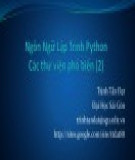
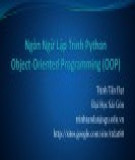
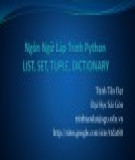
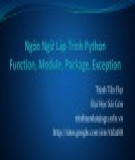
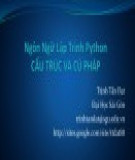





![Đề thi cuối học kì 2 môn Cấu trúc dữ liệu và giải thuật [kèm đáp án/mới nhất]](https://cdn.tailieu.vn/images/document/thumbnail/2025/20251014/lakim0906/135x160/89711760416179.jpg)


![Tài liệu Nhập môn Học máy và Khai phá Dữ liệu [chuẩn nhất]](https://cdn.tailieu.vn/images/document/thumbnail/2025/20251001/kimphuong1001/135x160/531759303870.jpg)






